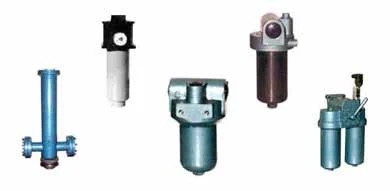Filters are devices designed to remove impurities or unwanted particles from a fluid, gas, or air. They are used across various industries, including automotive, aerospace, healthcare, and manufacturing. Filter elements, on the other hand, are the components within the filters that actually perform the filtration. They are typically made of materials such as paper, cloth, or metal and are chosen based on the specific requirements of the filtration process.
Types of Filters
- Air Filters: Air filters are crucial in maintaining the quality of air in residential, commercial, and industrial settings. They trap dust, pollen, mold, and other airborne particles, ensuring clean air circulation.
- Oil Filters: Used predominantly in automotive and industrial machinery, oil filters remove contaminants from lubricating oil, ensuring the smooth operation of engines and machinery.
- Water Filters: These filters are essential for providing clean drinking water and are used in homes, businesses, and industrial processes. They remove impurities such as chlorine, sediment, and bacteria.
- Fuel Filters: Fuel filters are vital in automotive and industrial applications, where they prevent contaminants from entering the fuel system, thereby protecting engines and improving performance.
- Hydraulic Filters: Used in hydraulic systems, these filters ensure that the hydraulic fluid remains free of contaminants, which can cause wear and tear on system components.
Types of Filter Elements
- Mechanical Filter Elements: These elements physically block particles from passing through, typically using a mesh or a membrane.
- Absorptive Filter Elements: Made from materials like activated carbon, these elements absorb contaminants from the fluid passing through them.
- Adsorptive Filter Elements: These elements use chemical or physical adsorption to trap contaminants on the surface of the filter material.
- Depth Filter Elements: These filters trap particles within the thickness of the filter material rather than just on the surface.
- Surface Filter Elements: These elements trap contaminants on the surface, making them easy to clean and reuse.
Choosing the Right Filter and Filter Element
Selecting the appropriate filter and filter element depends on several factors:
- Type of Contaminant: Understanding the nature of the contaminants you need to remove (e.g., dust, bacteria, oil particles) is crucial in selecting the right filter.
- Filter Efficiency: This refers to the filter’s ability to remove contaminants. Higher efficiency filters can trap smaller particles but may have higher pressure drops.
- Flow Rate: The filter must be able to handle the required flow rate without causing significant pressure drops.
- Environmental Conditions: Factors such as temperature, pressure, and chemical compatibility play a role in filter selection.
- Maintenance Requirements: Consider the ease of maintenance and the cost of replacement filter elements.
Benefits of High-Quality Filters and Filter Elements
- Improved Air and Water Quality: High-quality filters ensure that the air we breathe and the water we drink are free from harmful contaminants.
- Enhanced Equipment Performance: By removing impurities, filters help maintain the efficiency and longevity of machinery and equipment.
- Cost Savings: Effective filtration can lead to reduced maintenance costs and prevent costly breakdowns.
- Health and Safety: Clean air and water are crucial for human health, and high-quality filters help mitigate health risks associated with contaminants.
Maintenance and Replacement
Regular maintenance and timely replacement of filter elements are essential to ensure optimal performance. Here are some tips:
- Follow Manufacturer’s Guidelines: Always adhere to the maintenance schedules recommended by the manufacturer.
- Monitor Performance: Keep an eye on the performance of your filtration system. A drop in efficiency can indicate that the filter element needs replacement.
- Regular Inspections: Conduct regular inspections to check for any signs of wear or damage to the filter elements.
- Stock Replacement Parts: Keep a stock of replacement filter elements to avoid downtime when a replacement is needed.
Innovations in Filtration Technology
The filtration industry is continuously evolving, with new technologies emerging to meet the growing demands for cleaner air and water. Some of the latest innovations include:
- Nanofiber Filter Elements: These filters use nanotechnology to trap even the smallest particles, offering superior filtration efficiency.
- Self-Cleaning Filters: Designed for industrial applications, these filters automatically clean themselves, reducing maintenance requirements.
- Smart Filters: Equipped with sensors, these filters can monitor their own performance and notify users when maintenance is needed.
- Eco-Friendly Filters: Made from sustainable materials, these filters are designed to minimize environmental impact.
Conclusion
Filters and filter elements are indispensable in maintaining the purity of air, water, and various fluids. By understanding the different types of filters and filter elements, and choosing the right ones for your needs, you can ensure optimal performance, enhanced efficiency, and improved health and safety. Regular maintenance and staying abreast of the latest innovations in filtration technology will further enhance the effectiveness of your filtration system. Invest in high-quality filters and filter elements to reap the long-term benefits of cleaner air and water and well-maintained equipment.



